Which Mushrooms Are Best To Eat? Mushrooms are some of Earth’s most compelling life forms. In this article, we’re focusing on 11 of the healthiest mushrooms to include in your diet. Whether incorporated whole into meals or taken in supplement form, experience all of the benefits that come from consuming these fabulous fungi!
Rich in vitamins and minerals, low in calories, and flavourful—there’s very little not to like about edible mushrooms. These fungal beings are heavily featured in certain types of cuisines and are considered by some to be a superfood. Whether you use them as a meat alternative or you just love to include them in your dishes, here we explore the variety of health benefits associated with certain culinary mushrooms. But which mushrooms are good to eat in the first place?
Why eat mushrooms?

Though we’ve touched upon some already, here are the leading benefits of including mushrooms in your diet:
- Rich in vitamins and minerals: Many culinary mushrooms are rich in vitamin D, B vitamins, fibre, protein, and minerals like copper, selenium, and potassium.
- Contain antioxidants: The antioxidants found in some mushrooms may help to contribute to immune health.
- Wide selection: There are numerous varieties of mushrooms you can enjoy, offering a spectrum of unique flavours and textures.
- Low in calories and fat: For those seeking low-calorie or low-fat food alternatives, mushrooms are a superior option.
- Suitable meat replacement: With their robust texture and high nutrient density, many vegetarians, vegans, and mushroom lovers use mushrooms as a meat alternative.
Where do edible mushrooms grow?
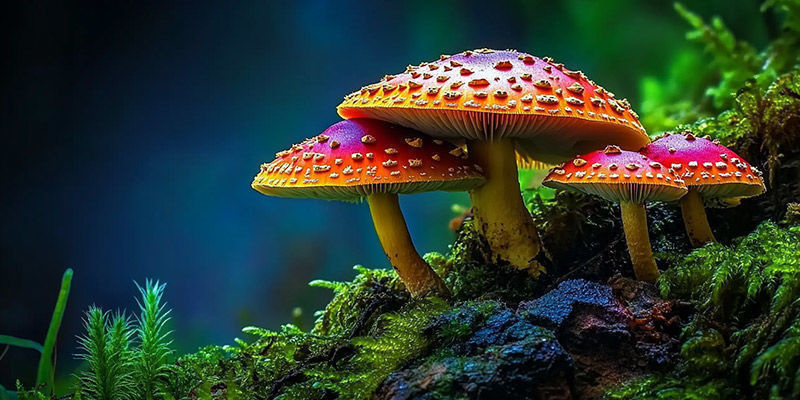
Belonging to the fungus kingdom of life, mushrooms grow in diverse regions around the world. Most pop up in environments with high humidity and moderate temperatures, such as forests and meadows. Many edible varieties are native to East Asia, though they grow in other regions as well. Favouring substrates such as dead and decomposing wood, dung, mulch, fallen leaves, and other nutrient-rich sources, mushrooms are actually the fruiting body of the fungus that appears above the ground. The sclerotia—also known as truffles—grow underground as hardened masses of mycelium, which are the fungal strands that compose the mushroom specimen.
While some individuals forage edible mushrooms in the wild, realistically the vast majority of mushrooms you pick up from your local market have been cultivated under controlled conditions. This is to both ensure the mushrooms meet food safety regulations and to optimise the growth and consistency of the fruiting bodies themselves. The process of cultivating edible mushrooms takes place in sterile conditions, starting with a specific variety of spores that farmers carefully grow into mature mushrooms using a tailored substrate (usually a rich compost blend).
Which mushrooms can you eat?
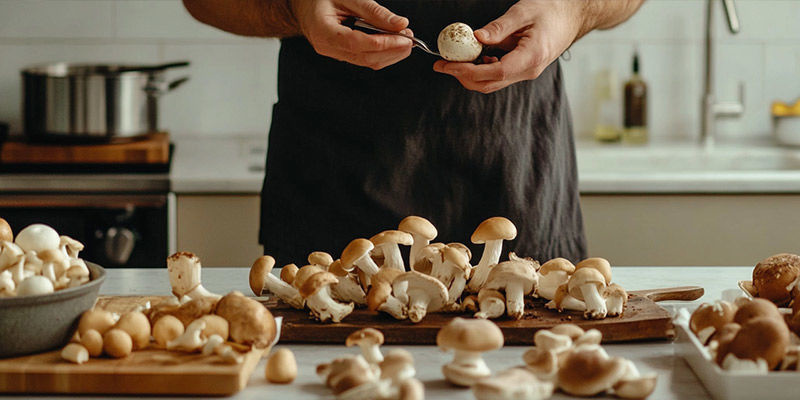
Of crucial importance when discussing eating any kind of mushroom is safety. While you can be pretty sure that store-bought mushrooms are safe for consumption, foraging is a different story. Many mushroom varieties look very similar to one another but affect people in vastly different ways. Certain mushrooms are poisonous, with some causing relatively mild symptoms and others proving lethal. So we never advise foraging for any kind of mushroom unless you know exactly how to identify your given species.
Can you eat mushrooms raw?

This is a bit of a complex subject—in practice, certain culinary mushrooms can indeed be eaten raw. That said, it’s recommended to eat them in moderate amounts. The main hang-up with eating raw mushrooms is their potential to cause digestive issues. This is due to the presence of chitin—a fibrous substance that our bodies are not naturally adept at digesting. While generally suitable in small amounts, those with existing gastrointestinal issues or a sensitive stomach may want to avoid eating raw mushrooms.
Furthermore, contrary to what some might believe, cooked mushrooms tend to offer greater availability of beta-glucans, B vitamins, and other nutrients than raw mushrooms. Aside from that, most people agree that cooked mushrooms taste better than raw, with a richer, more developed flavour.
Still, there are some mushrooms you can eat raw, including: crimini, white button, shiitake, portobello, oyster. On the other hand, there are certain edible mushrooms that should not be consumed in their raw form—these can cause substantial GI upset due to their high chitin content. These include chanterelle, reishi, morel, porcini, and others.
When not to eat mushrooms

As with any foodstuff, you want to make sure your mushrooms are good to eat before adding them to your dish of choice. But how do you know when mushrooms have gone bad? While there are a few signs, the two most telling are feel and smell. In terms of the former, when mushrooms start to become slimy, they are generally no longer suitable for use. Though the exterior can be cleaned or partially removed, the integrity of the mushroom will undoubtedly be damaged. Even more telling is a foul smell. If your mushrooms have a rotten, fishy, or ammonia-like smell, do not eat them.
In order to ensure your mushrooms stay fresh as long as possible, you need to ensure sufficient airflow and low humidity. With that in mind, it’s recommended to remove the mushrooms from their packaging after purchase. The plastic used to encase store-bought mushrooms can easily collect moisture and lead to slimy mushrooms in less than a week in the fridge. To extend the lifespan by at least a few days, place the mushrooms in a paper bag containing a paper towel, and put them in the fridge—this will keep humidity at bay. Stored this way, you can expect whole fresh mushrooms to last up to 10 days before degrading in quality.
If you want to store mushrooms in the long term, you’ll have to dehydrate them; in this state, they can last months or longer in appropriate conditions.
Are mushrooms vegan?
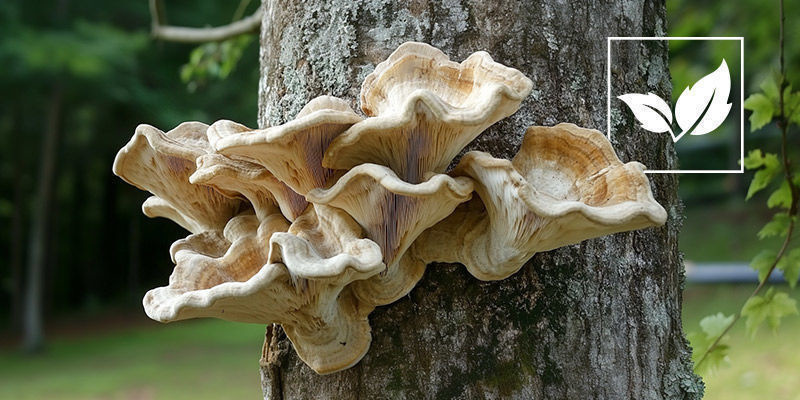
In short—yes, mushrooms are vegan. They are not an animal product or byproduct, and they belong to their own kingdom of life distinct from animals (and plants for that matter). However, there is some controversy surrounding certain edible mushrooms that feed on living creatures, e.g. oyster mushrooms consuming nematodes. So in a very strict definition, the oyster mushroom and others that consume creatures from the animal kingdom are not necessarily vegan. But in practice, many vegans consume all manner of mushrooms in their diet.
Which mushrooms are healthy to eat?
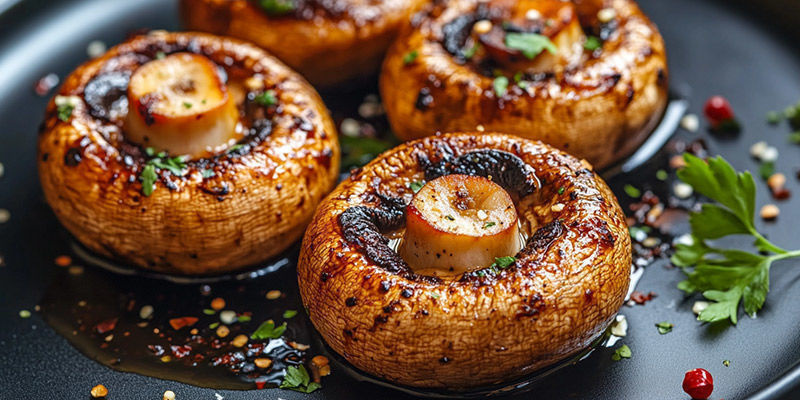
Hungry yet? If all this talk of mushrooms has you eager to enjoy some yourself, let’s explore some of the healthiest mushrooms to eat! Some of the following are perfect for including in a wide range of dishes, while others are best taken in the form of a powdered or liquid extract. It’s worth noting that while many of the following mushrooms are being researched in the context of certain health conditions, our focus will mainly be on the nutritional density of these varieties.
Lion’s mane
Featured as the star of a delicious meal or taken in the form of an extract, lion’s mane has a wide variety of nutritional benefits to offer. Containing vitamins and minerals like niacin, thiamine, riboflavin, manganese, potassium, and zinc, as well as antioxidants, this East Asian mushroom is also celebrated for its mild, sweet flavour and meaty texture—both of which are often compared to crab meat. It’s also one of the most extensively used mushrooms in traditional Chinese holistic practices.

Agaricus bisporus
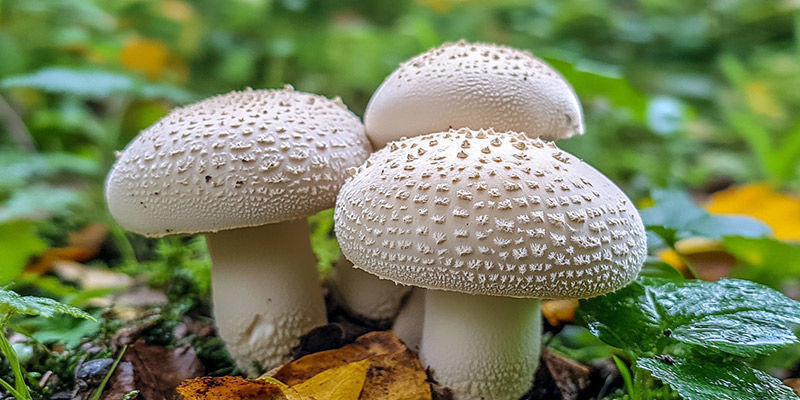
Whether you know it as the button mushroom, the common mushroom, or the cultivated mushroom, Agaricus bisporus is one of the most commonly eaten mushrooms the world over. Coming from the grasslands of Eurasia and North America, this mushroom appears in white and brown varieties, and can be included in all manner of dishes. These mushrooms are a great source of riboflavin, niacin, and pantothenic acid, as well as phosphorus and potassium.
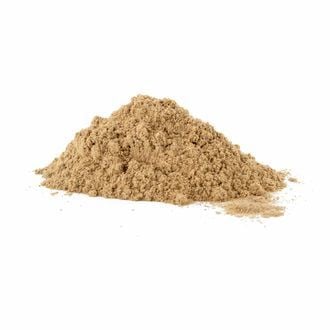
Maitake
Maitake, or hen-of-the-wood, is an eye-catching mushroom native to parts of Asia, Europe, and North America. Packed with vitamin D, as well as fibre and a decent amount of protein, maitake is also being studied for its broader holistic potential, much like many other mushrooms on this list. As a highly sought-after specimen in the culinary world, the woodsy flavour of this mushroom simply must be experienced. Alternatively
